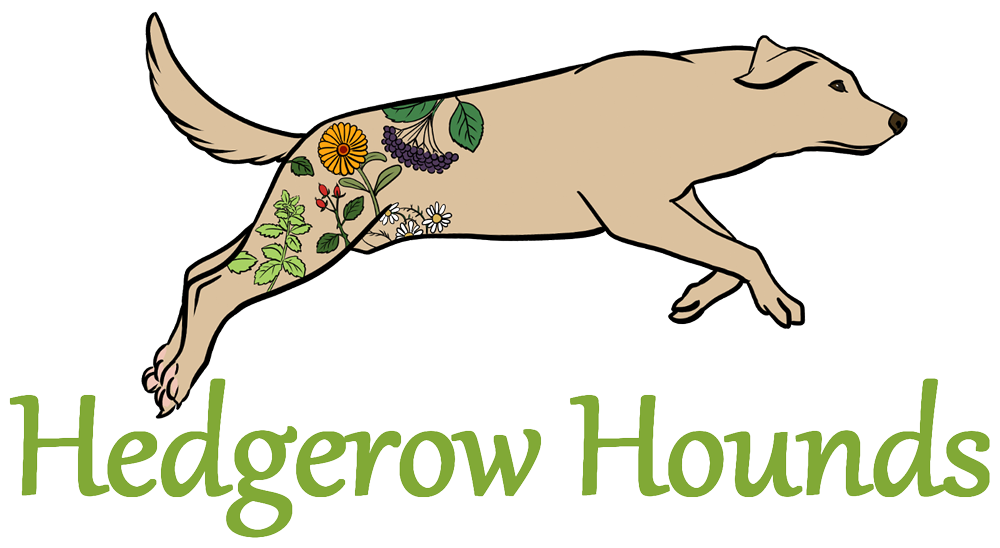If there is one ingredient that causes controversy in the diet of dogs that would have to be garlic. Some people swear by its health-giving properties and others would never consider feeding it to dogs.
Garlic tends to be grouped in with all members of the onion family, which can be very toxic to dogs.
Garlic (Allium sativum) is a pungent member of the onion family. It grows as a bulb which contains between 10-20 individual teardrop shaped segments called cloves.
It has long been used to enhance the flavour of our meals and for its medicinal use as it possesses antibacterial, antifungal and anti-parasitic properties.
It does however need to be fed with care when incorporating it into the diet of our dogs. The main reason for this is that garlic contains thiosulphate, which if consumed in large amounts or over long periods of time can decrease the number of red blood cells, resulting in Heinz body hemolytic anemia.
The active constituents of garlic include alliin, alliinase, quercetin, anthrocyanins, amino acids and volatile oils. Garlic contains 33 sulphur compounds and the compound that you can smell once a garlic clove is cut or crushed is called allicin.
Allicin is an unstable compound that dissipates rapidly when exposed to air and heat so for maximum effect it is best consumed within 10 minutes of crushing. The familiar garlic odour can travel throughout the body when consumed, and we can smell it on our breath and through our skin. This also applies to our dogs which is thought to make them more unpalatable to parasites of all kinds, hence why people use it as a natural preventative at certain times of the year.
When it can be useful:
Before adding any supplementation to your dog’s diet, it is important to establish what you are aiming to achieve by doing so and what benefits there are for your dog.
The most frequent reason for including garlic is for the control of parasites, be that internal or external in the form of fleas, ticks, and mites.
It can be a useful addition to the diet as a small part of the overall natural regime of preventing fleas and ticks if you live in a high-risk area of the country. If you intend on using garlic as a means of internal parasite control it is still essential that you regularly use faecal worm counts to establish that your natural method of worm control is working for your particular dog.
The only time I include a form of garlic into my dogs diet is during the short growing season of wild garlic, also known as Ramsons, which is a broad leaf garlic occurring in late spring with a much milder action than the pungent bulb garlic. I have also witnessed dogs self-selecting wild garlic whilst out on a walk and consuming small amounts of the leaf and flower as it emerges in the spring.
When to avoid:
Garlic can interact with certain medications such as insulin, heart medication, immune suppressants, blood thinners, chemotherapy drugs and it should also be avoided if your dog has any pre-existing anaemia.
There is believed to be an increased risk of side effects in the Akita and Shiba Inus, so if you have these breeds, it is advisable to research further before use.
Due to its blood thinning properties, it is recommended that garlic is removed completely from the diet for two weeks prior to any surgery and for a week post-surgery.
Avoid feeding to pregnant and lactating females and bear in mind that it can taint the milk.
Do not feed to puppies under six months of age and use caution in dogs that are 6 – 12 months of age.
How to feed:
If your dog doesn’t have any of the contraindications mentioned earlier and you want to include garlic into your dog’s diet then here are a few guidelines.
It is not recommended or necessary to feed garlic in large amounts or for a long period of time. If you feel that it will be a useful addition over the summer months for added flea control, then freshly crushed garlic will be more effective from smaller doses.
Dosage:
Due to the incredibly pungent aroma and bitter taste of fresh garlic it is highly unlikely that even the greediest of dogs will want to eat large amounts in one sitting or consume it on a very regular basis.
So, if your dog is not on any contraindicated medication or has any existing health issues which could be compromised by feeding garlic, the following dosage for short term use should not cause any problems.
Based on the guidelines of holistic vet, Dr. Karen Becker, she recommends freshly crushing a clove of garlic, setting it aside for 10 minutes before adding to the food at a rate of quarter of a teaspoon for every 15 pounds (6.8kg) of bodyweight. This suggested dose is for use 2-3 times a week, just for the duration of the flea and tick season and not all year round.
This does also depend on your dog’s tolerance of garlic, as it can cause intestinal upset and if they find it palatable enough to eat in their meals.
As a rule, one clove, when crushed or sliced equals one teaspoon of garlic.
You can of course buy a garlic supplement specifically for dogs in a tablet form and because these are more palatable than fresh garlic it is important to follow the dosage guidelines of the product carefully.
Caroline Hearn MICHT, Dip.ICAT. MIAAT
Sports & Remedial Massage and Canine Holistic Therapist
